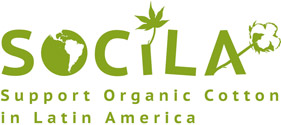Organic Cotton Cropping
Organic cotton farming methods are in line with other organic farming methods and typically include crop rotation, sowing of groundcovers, and fertilising soils with animal manure and naturally occurring rock powders. Weed control is done by hand and flame treatment in combination with other cultural practices such as mixed cultivation. Insect control measures include trap cropping, strip cropping and the use of bio-pesticides made of bacteria, viruses, and fungal insect pathogens.
The methods of organic farming are well known and especially for cotton there is ample literature and global exchange of information.
 Generally, older farmers and farmers in regions of low income, who could not afford buying chemical products, still know organic farming methods. They can be applied anywhere and there are actually no geographical limitations to organic farming. Moreover, organic cotton farming has no quality restrictions: long fibre cotton can, for instance, be sown with the same results as with conventional farming. Organic cotton quality is often even higher than conventional cotton of the same variety, as it is normally hand-picked and subject to more stringent controls than conventional cotton.
Generally, older farmers and farmers in regions of low income, who could not afford buying chemical products, still know organic farming methods. They can be applied anywhere and there are actually no geographical limitations to organic farming. Moreover, organic cotton farming has no quality restrictions: long fibre cotton can, for instance, be sown with the same results as with conventional farming. Organic cotton quality is often even higher than conventional cotton of the same variety, as it is normally hand-picked and subject to more stringent controls than conventional cotton.
As a rule of thumb, organic cotton farming is more labour intensive than conventional cotton farming, thus well suited to developing countries with low labour costs. Yields in organic farming are normally lower than in conventional farming, in particular in the first years of production. However, as there are no costs for chemical inputs in organic farming, gross margins per hectare of farmland for organic cotton cropping are already reaching very competitive levels, especially in medium and low labour cost countries (Long Term Trial in India, Christian Andres FiBL, 2013).


